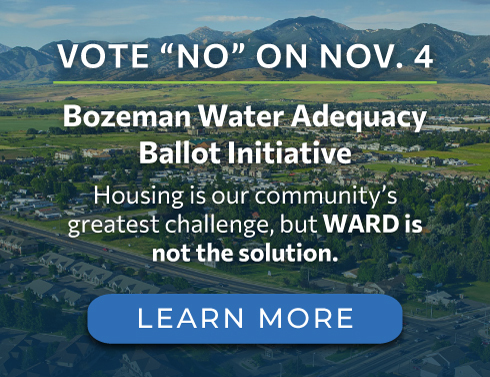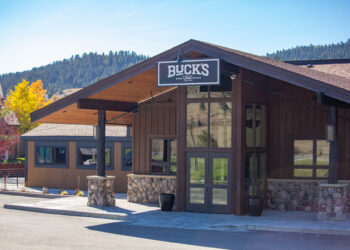Upcoming vote to determine 1 percent resort tax increase
By Brandon Walker EBS STAFF
BIG SKY – After months of work and facing down an expanding population and exploding development, two local boards have come to a critical agreement that, upon voter approval, could allow an additional 1 percent of Big Sky resort tax dollars to help fund a $35 million upgrade to local water and sewer infrastructure.
At its Feb. 4 open meeting, the Big Sky Resort Area District tax board’s agenda included a key item: the ratification of the language of the Infrastructure Interlocal Agreement with the Big Sky Water and Sewer District.
Capping a months-long collaborative effort with the Big Sky Water and Sewer District, the board unanimously approved the Interlocal Agreement language. The agreement seeks to activate Senate Bill 241, a piece of legislation that failed in 2017 and passed during the 2019 session that allows Montana’s 10 resort tax communities to propose a 1 percent tax increase for the duration of vetted infrastructure projects.
A critical infrastructural endeavor looms large: upgrades to the existing wastewater treatment plant combined with expanded service to the growing community in Gallatin Canyon.
BSRAD District Manager Daniel Bierschwale noted the ratified agreement will be null and void if the community fails to pass the measure, which would add 1 percent to the existing 3 percent resort tax, in a May 5 mail-in vote—a date that doubles as the BSRAD’s election day.
“I think this was a really good example of how this subcommittee worked with Water and Sewer to accomplish something that not only benefits Water and Sewer, but also the community,” said BSRAD Secretary Buz Davis.
Water and sewer board follows suit
One day after BSRAD voted favorably on the language of the proposed Infrastructure Interlocal Agreement, the Big Sky County Water and Sewer District board voted unanimously on Feb. 5 in favor of proceeding with the agreement.
The pending 1 percent bump in resort tax would be applied to the improvement of the quality of treated water and increase the facility’s daily intake capacity by more than 300,000 gallons to a total of 910,000 gallons.
The aforementioned service to the residents of the Gallatin Canyon would be rendered through the installation of a lift station and pipeline systems in Gallatin Canyon, pending the formation of a separate water and sewer district in the canyon by 2022. That newly formed district would in turn have to enter into an agreement with the existing water and sewer district regarding the handling of its wastewater. If the canyon fails to form a new water and sewer district by 2022, then the agreement would be disbanded.
Water and sewer General Manager Ron Edwards explained that if the existing district were to get the necessary approvals and install pipelines from the current plant to the canyon, water from the canyon would go to the newly proposed lift station, then up to the existing water and sewer plant. A second pipeline would take treated, reclaimed wastewater back to the canyon where, pending the granting of a permit by Montana Department of Environmental Quality, it could be used for groundwater disposal in the canyon area.
“There’s a line that would pump raw influent to the plant and then there’s a second line which would allow us to take water by gravity back down the hill,” Edwards said.
According to the water and sewer district’s website, the facility upgrade will offer benefits in addition to the expanded holding capacity. Bacteria, nitrogen and phosphorus levels will all be decreased by 90 percent or better in the treated water after the upgrade, meaning less will enter existing groundwater after its disposed.
Per the agreement between the two boards, 60 percent, or a maximum of $27 million, would be allotted to the facility upgrades and all costs would be covered for construction of the new canyon lift station and pipe systems up to a maximum of $12 million.
“These are based on engineering cost estimates that are being done in a really crazy period of time the way costs have been rising in these infrastructure projects, so it’s our best numbers, at least right now,” Edwards said. “But you don’t know until you actually bid the project what you’re going to have.”
The $35 million in total granted for these projects caps the amount resort tax district can award to the water and sewer district during the term of the agreement, which would last until 2032. If additional assistance is necessary, the original agreement would need to be amended, according to language in the current agreement.
The potential roadblock was one of the larger causes for concern within the water and sewer board as they discussed the agreement before the May 5 vote.
Based on current growth projections, BSRAD believes the $35 million commitment could be collected in just over a decade.














